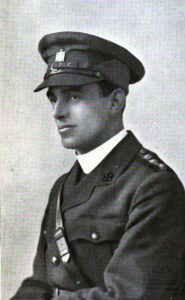Sunday June 16th, 1918
Reveille 6:45. Breakfast 7am. Compulsory Church Parade drill order. Very hot again. Quiet walk at night, picked fruit and washed clothes.
Church Parade
A church parade is a military parade organized with the sole purpose of attending a religious service. As Frank has noted, it is compulsory. Some were mandatory for a particular denomination – for the British Army this usually meant the Church of England. However, the Battalion Diary clearly states that today’s parade was for all.
According to an article in Wikipedia, ‘many chaplains [felt that] the soldiers did not resent the compulsion to attend, but only resented the intense preparation of each soldier’s kit to attend the service’.¹
Mandatory church parades were abolished in the UK in 1951.¹
Army Padre

As is often the case, the attitude of the soldiers to their Army Padre was usually determined by the type of padre they encountered. Those who offered practical comfort and kind words were much loved.
These included ‘Woodbine Willie’ who earned the nickname for handing out Woodbine cigarettes as well as New Testaments. His real name was Geoffrey Anketell Studdert Kennedy. At the outbreak of war, he was a vicar in Worcester and volunteered immediately. He was awarded the Military Cross in 1917:
‘For conspicuous gallantry and devotion to duty. He showed the greatest courage and disregard for his own safety in attending to the wounded under heavy fire. He searched shell holes for our own and enemy wounded, assisting them to the dressing station, and his cheerfulness and endurance had a splendid effect upon all ranks in the front line trenches, which he constantly visited.’ ²
During the war he became a Christian Socialist and pacifist. He was a prolific writer and poet as well as a popular orator. One of his most famous lines was, ‘If finding God in our churches leads to us losing Him in our factories, then better we tear down those churches for God must hate the sight of them.’³
Geoffrey Anketell Studdert Kennedy died in 1929 at the age of 45.
A Saint
Some may not have earned the medals but still garnered moving tributes from those around them. One example was written about Father Knapp by Captain EP Dark, while serving with the RAMC in Ypres. ‘The next night we went up into the trenches at a spot known as ‘hellfire corner’, near the tip of the salient. The aid post was in a sort of sandbagged hut, just behind the support trench which was held by one company. Father Knapp, the battalion padre, came with me (why not with HQ I don’t know) . He was a Trappist monk from a monastery in London and the only man I have ever met who was certainly a saint, He was elderly, tall, lean, stooping, with a most gentle voice; he was also excessively timid, dying emotionally every time a shell came within 50 yards, yet whenever a man was wounded he would be there to cheer him up, Or if he were dying, to give him extreme unction, however heavy the shelling. What the men thought of him can be judged from the fact that he firmly believed that the battalion was quite free from swearing or profanity, when of course they were just as foul-mouthed as any other lot when Father Knapp was not within hearing.’º
Father Knapp was killed at Passchendaele at the end of August 1917.
13th (Service) Battalion War Diary – 16th June 1918 – La Marraine
Sunday Parade services all denominations. The Major General Commanding 22nd Division (J Duncan) attended Church of England. The Divisional Band also present. Lt. HRW Smith reported his arrival & taken on our effective strength and posted to D Coy.
References & Further Reading
¹ Church Parade in Wikipedia
² London Gazette, 14 Aug 1917, supplement 30234, page 8384
³ Article on ICF (also see Wikipedia article)
º The Military Memoirs of Captain E.P. Dark. 1915-1919‘, by EP Dark, copyright his son, John Oliver Dark
* Image of Geoffrey Anketell Studdert Kennedy from The Bookman Special Christmas Number (December 1918). Image may be subject to copyright



One thought on “Church Parade – June 16th, 1918”
Comments are closed.